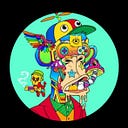NFTs: The Rise of Non-Fungible Tokens (NFTs)
What are non-fungible tokens (NFTs), who invented them, and where did they come from?
The history of non-fungible tokens finds its genesis in 2012 with ‘colored coins’ which were designed to be tokens that worked on the Bitcoin blockchain.
Digital artists loved the idea of creating virtual assets that could be used to represent things of value. Soon enough creators like Kevin McCoy went on to mint the very first NFT in May 2014.
As the years progressed, traction began to grow, albeit slowly, among investors and content creators about the possibilities of CryptoArt as an asset class. Non-fungible tokens became synonymous with art that’s scarce, authentic, decentralized, and on the blockchain.
The Emergence of CrytoKitties and CryptoPunks
Image credit source: Cryptokitties.co
In 2017, NFTs made mainstream headlines when a digital cat character (a.k.a CryptoKitty) sold for well over $100,000. From here on, other virtual characters, in particular, CryptoPunks rose to prominence. In fact, 5 of the top 15 most expensive NFTs ever sold to date come from the finite set of 10,000 CrytoPunks created by LarvaLabs.
In 2018, digital artist Kevin Abosch’s prolific The Forever Rose CrytoArt piece fetched a historic $1 million during a charity auction. This helped to set precedent for other artists and the NFT explosion that would follow in the next two years.
The NBA Top Shot Experiment
In July 2019, the NBA joined hands with the company that developed CryptoKitties to release NBA Top Shot.
NBA Top Shot is an NFT marketplace where fans and investors can trade NBA game video highlights.
This project has been so successful that more than $230 million has been made in sales from the Top Shot marketplace to date.
The 2020/2021 NFTs Explosion
There is no doubt that the growth of NFTs was greatly accelerated by the COVID-19 pandemic. As people braced themselves for a recession, lots of investors turned to cryptocurrencies as safe-havens.
After purchasing crypto, investors began to look into NFTs with more earnestness. Eager for profit and so taken by the potential wealth to be garnered, they drove sales of digital collectibles.
NFT sales reached a record $10.7 billion in Q3 of 2020 up from $1.3 billion in Q2.
Artists Who Have Capitalized on NFTs
It’s not just digital creators that have struck gold with this NFT trend but musicians too.
From household names like Soulja Boy selling his “Crank That” NFT to more obscure upcoming artists like Young and Sick who only have 27,000 Instagram followers but reportedly sold an NFT for $865,000, NFTs have proved to be a game-changer.
So, what’s next for NFTs?
The Future of NFTs
The future of NFTs seems littered with infinite possibilities. Tokenization is still in its infancy but has already shown its potential to both artists and investors alike.
Already a billion-dollar industry, non-fungible tokens are driving the digital art marketplace and seem to have infiltrated into other sectors. It’s safe to say that NFTs seem to be here to stay.
This is the first post in a series on NFTs. Subscribe to receive the next posts in the series.
In the meantime, you can also visit my Understanding Blockchain: Blockchain Beyond Cryptocurrency blog post to learn more about blockchain’s latest applications.
